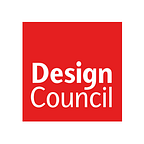The Double Diamond design process — still fit for purpose?
Richard Eisermann, Design Council’s previous Director of Design and Innovation
Let’s be clear about one thing — the UK Design Council didn’t invent the Double Diamond, it popularized it. The Double Diamond had antecedents in the work of John Dewey, Osborn & Parnes, Béla Bánáthy, Herbert Simon, Donald Schön and many others, who all made major contributions to problem-solving theories and the practice of design.
Dewey believed in bringing experience and inquiry together, and that learning should be an active process driven by problem-solving and critical thinking. Osborn & Parnes proposed divergent and convergent activities in their Five Diamond model. Bánáthy abstracted Parnes’ model and compressed five diamonds into two, bringing his work to bear on systems design.
Others focused on the role of the designer. In The Sciences of the Artificial, Simon laid out his design philosophy: “Everyone designs who devises courses of action aimed at changing existing situations into preferred ones”. Schön used the concept of “reflection in action” to describe how practitioners think in real time, adapting strategies to changing contexts.
(To better understand this background, Benjamin Taylor’s article provides a comprehensive overview of the Double Diamond, with historical links and references, while GK VanPatter goes a step further in a learned, critical analysis of the Double Diamond).
All this foundational material got fused under heat and pressure to produce the two diamonds that are, 20 years on, still an important (however flawed) reference point for designers around the world. All the ”prior art” made it easy for our team (primarily Anna White, Chris Vanstone, Jonathan Ball and myself, supported by the graphic excellence of Cartlidge Levene) to simply express a complex process without making it simplistic.
Our objective was to provide a framework for designers to contextualize their work and help their clients understand what designers do, without getting too precious about it. It had to be relatively quick to get through, and be something easily memorized and shared. After all, who wants to spend a client’s valuable time and attention on process when you need to focus on content?
The question is whether the Double Diamond is still, given the tremendous changes in design practice over the last two decades, fit for purpose? The answer: probably not. The ascendance of fast-paced digital design, along with the complexities of the challenges designers are currently addressing with services and systems, have left the Double Diamond a bit short of breath.
Do a Google image search for “Double Diamond Design Process” and you’ll find hundreds of variations on the theme, most (like the “original”) without a feedback loop for measuring design success. While we anticipated many cycles of iteration throughout the process, we didn’t explicitly include measurement. In today’s data-driven world, that is a miss, even if the quantification of experience is still in its infancy.
AI and machine learning are also topics to be considered in the updating of the process. The Double Dimond is linear, and while the diamonds were conceived to be scalable both horizontally and vertically, they still pretty much describe an idea funnel that transmutes questions into solutions. The advent of content generation tools such as ChatGPT and Midjourney make it possible to, as John Cage advised, begin anywhere, by posing provocative “what if?” questions through “finished” product.
So what do we do? The Design Council itself has recognized that we need to put down the old Diamond Diamond and bring in a new one: the Systemic Design Framework. I heartily agree, and I think more needs to be done. There’s all sorts of design methods out there (check out Hugh Dubberly’s compendium of process models) and maybe the biggest design challenge we face is the design of the process itself. Let’s just not spend too much time on it. Or wait another quarter century before trying something new.
